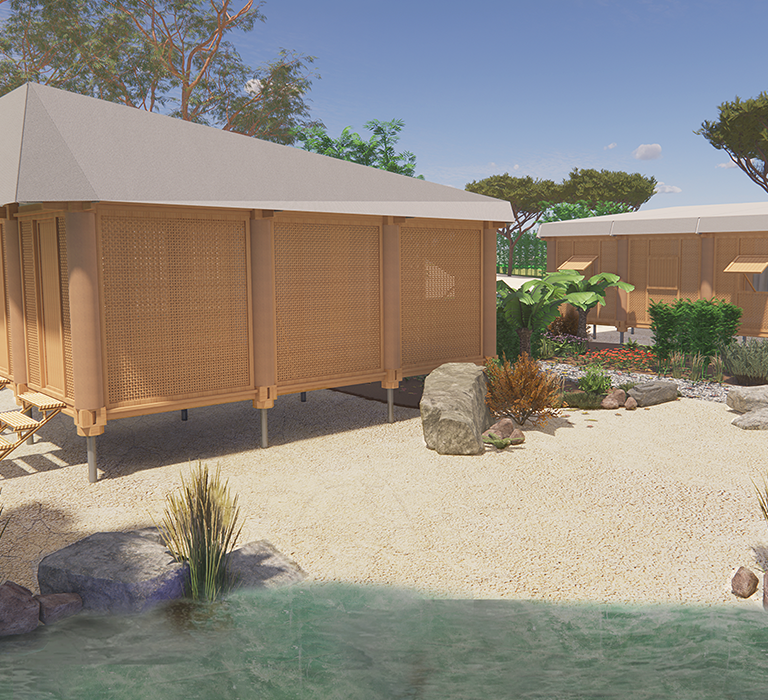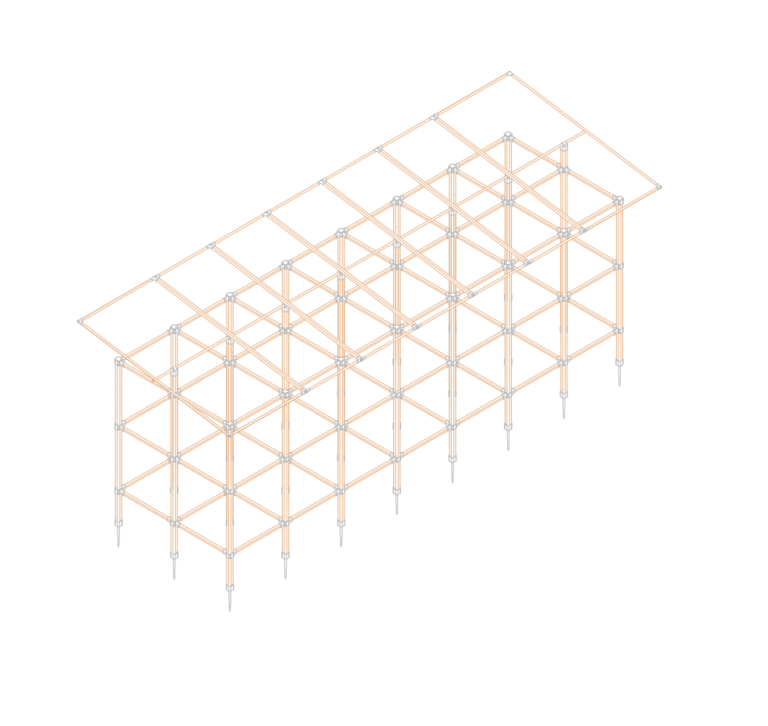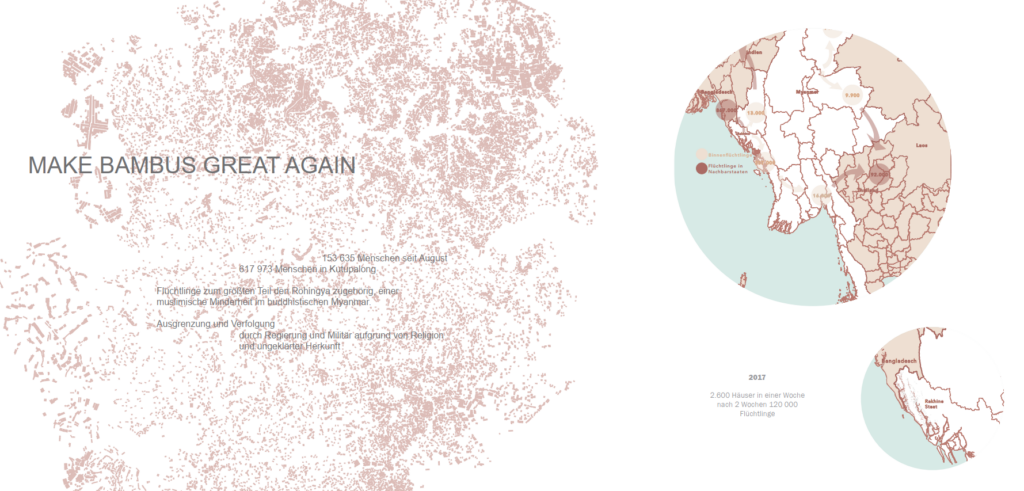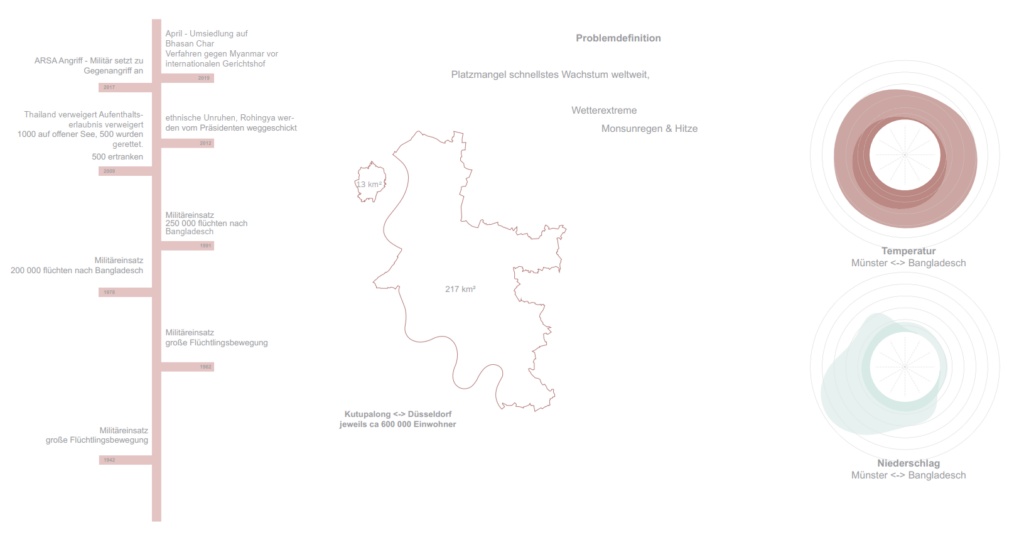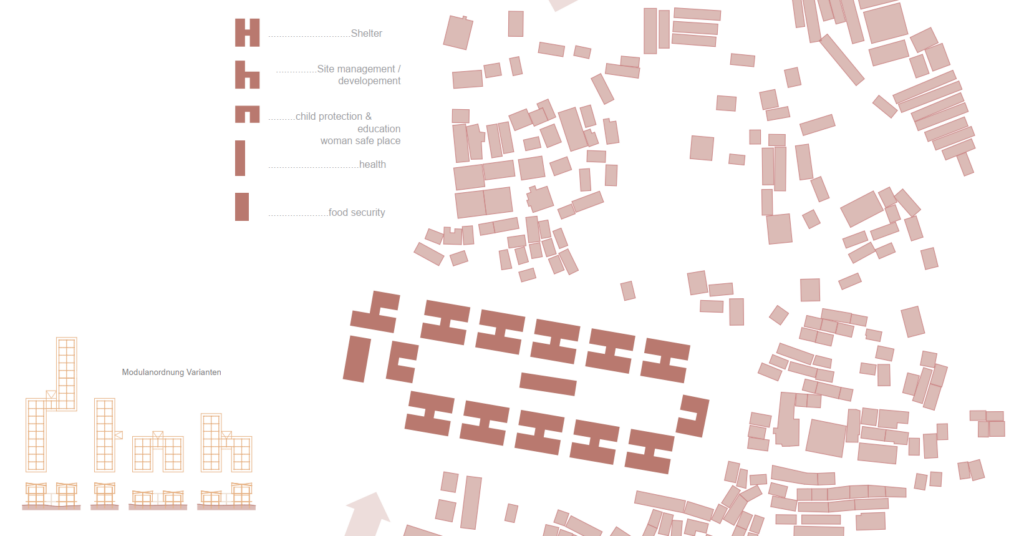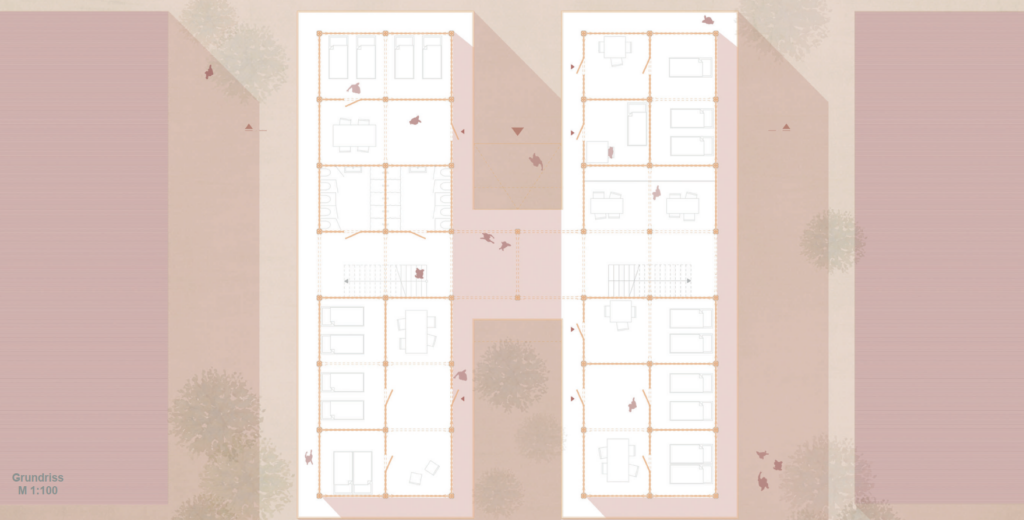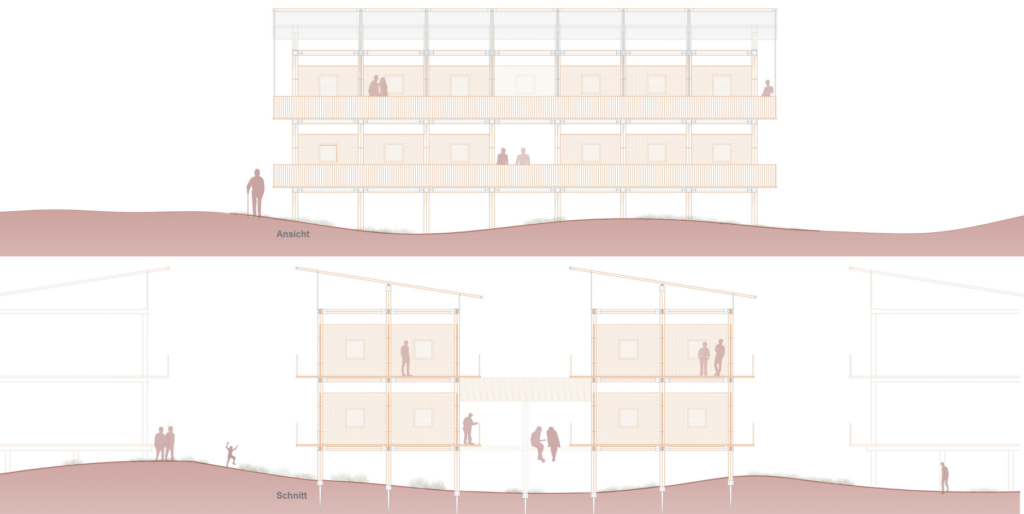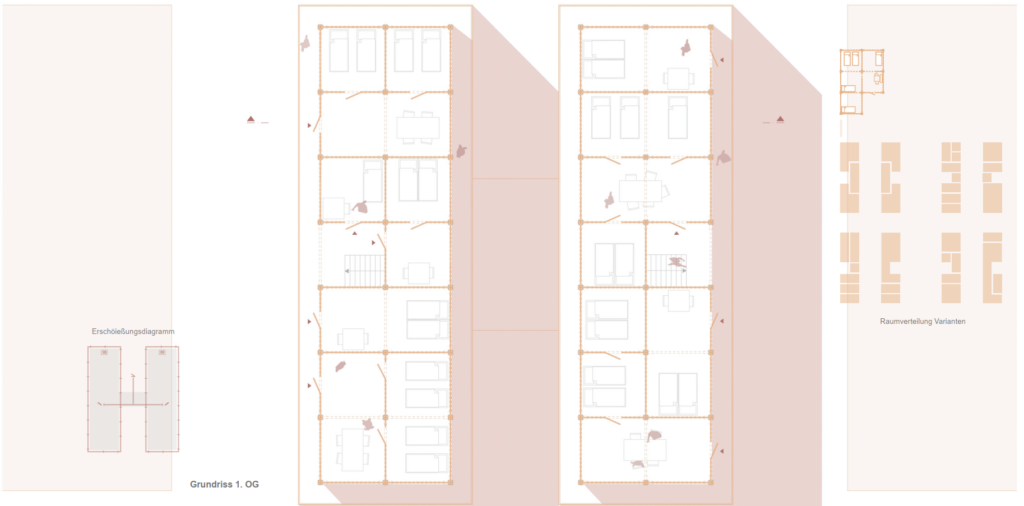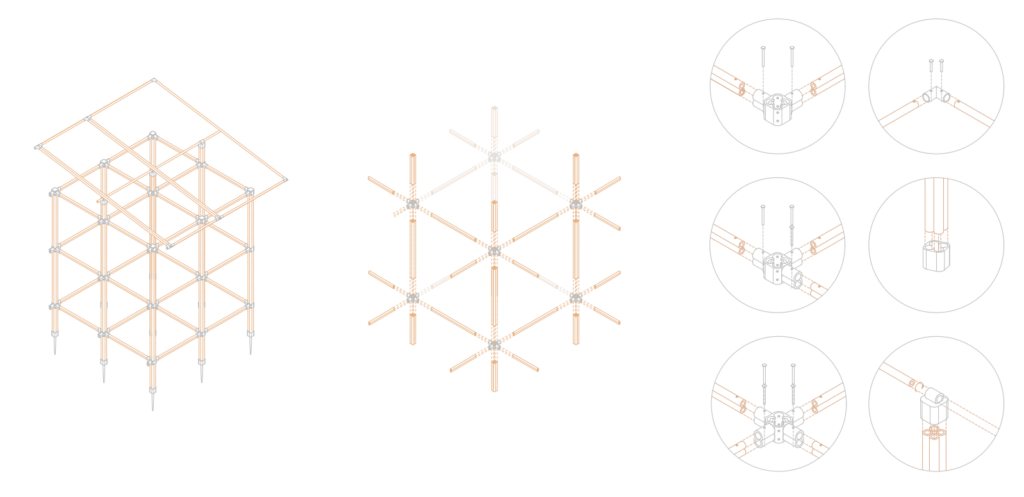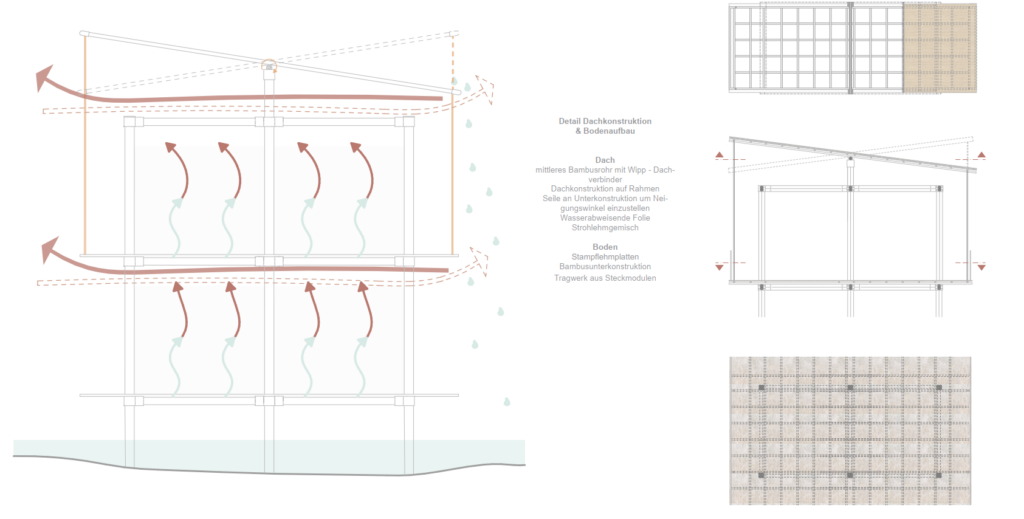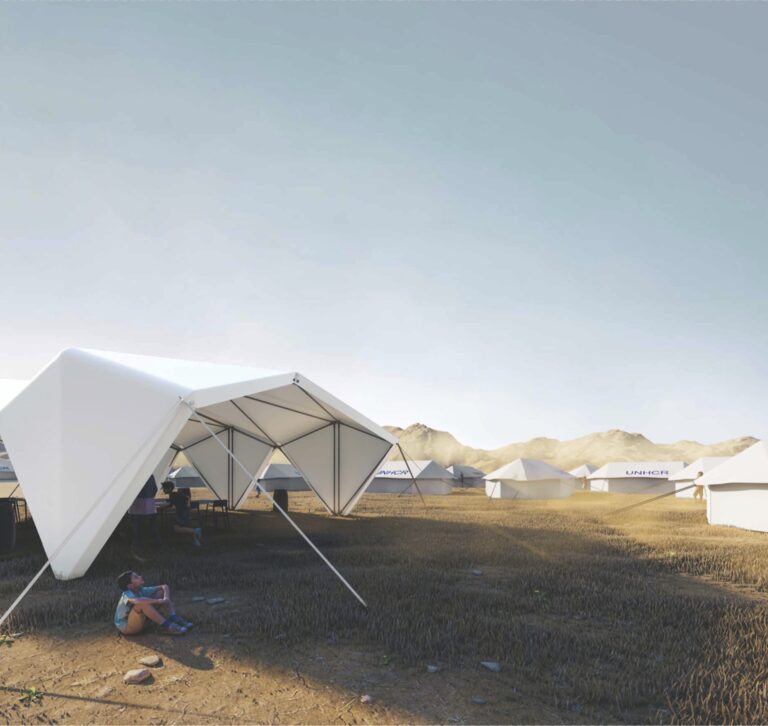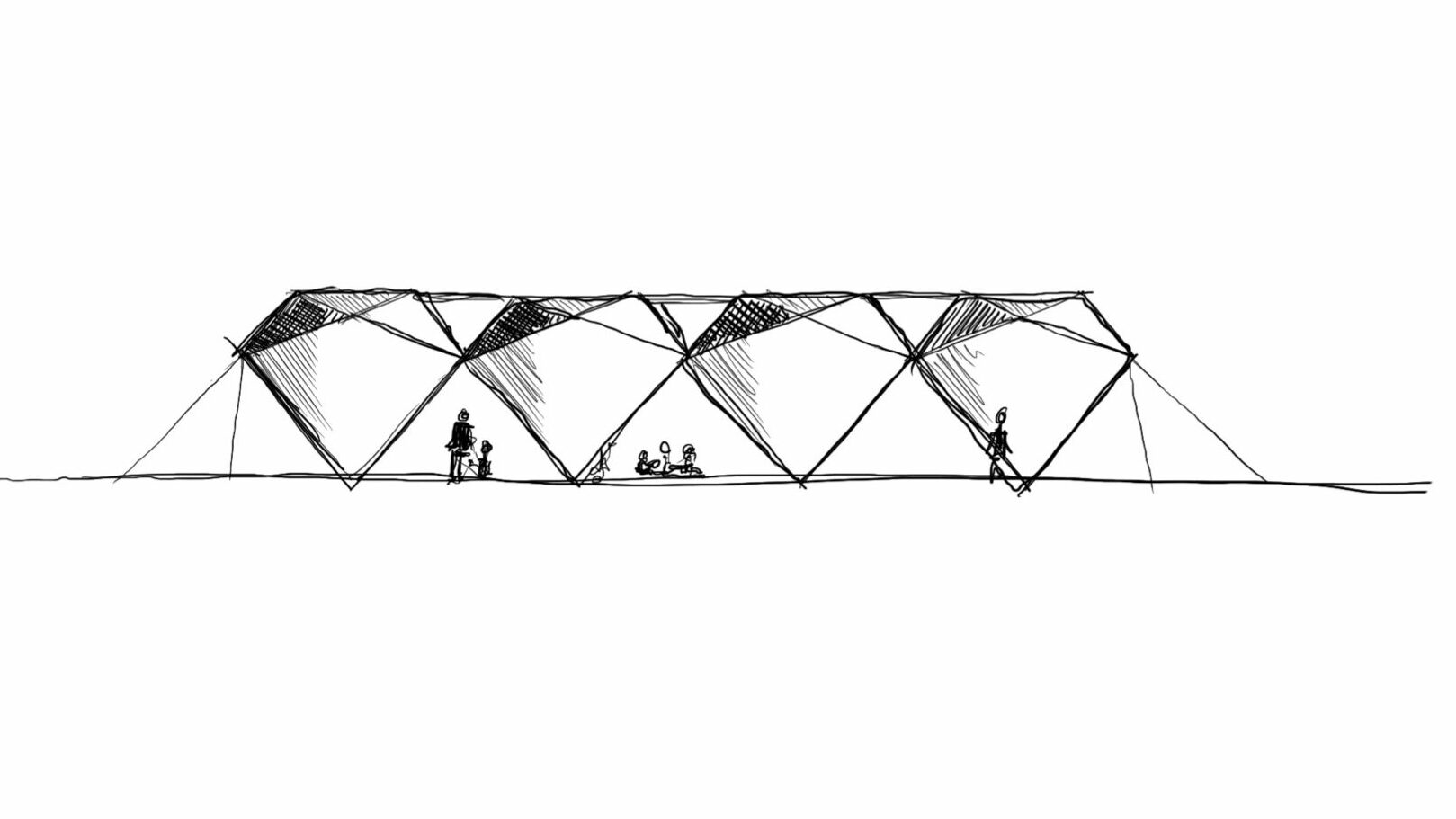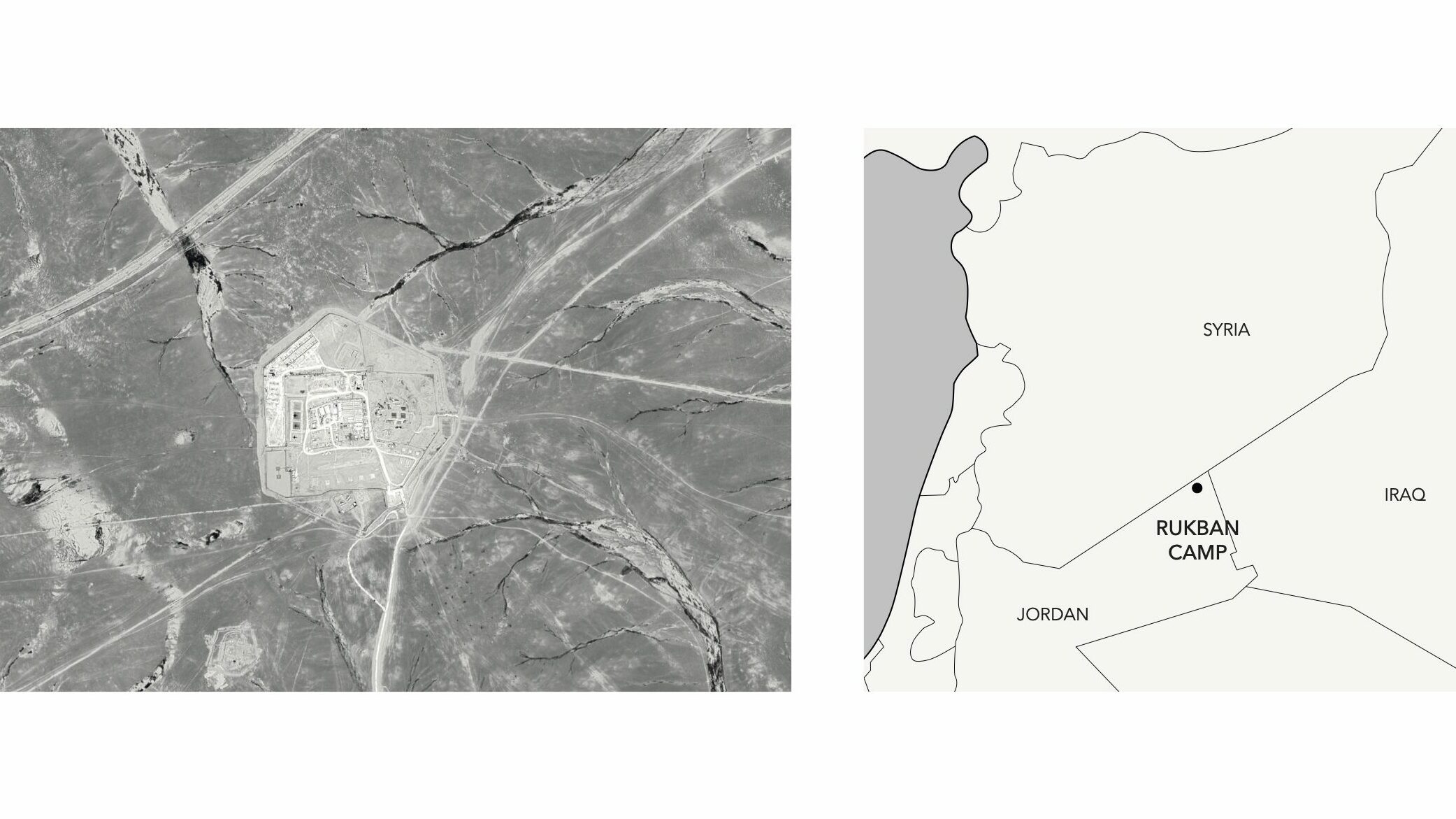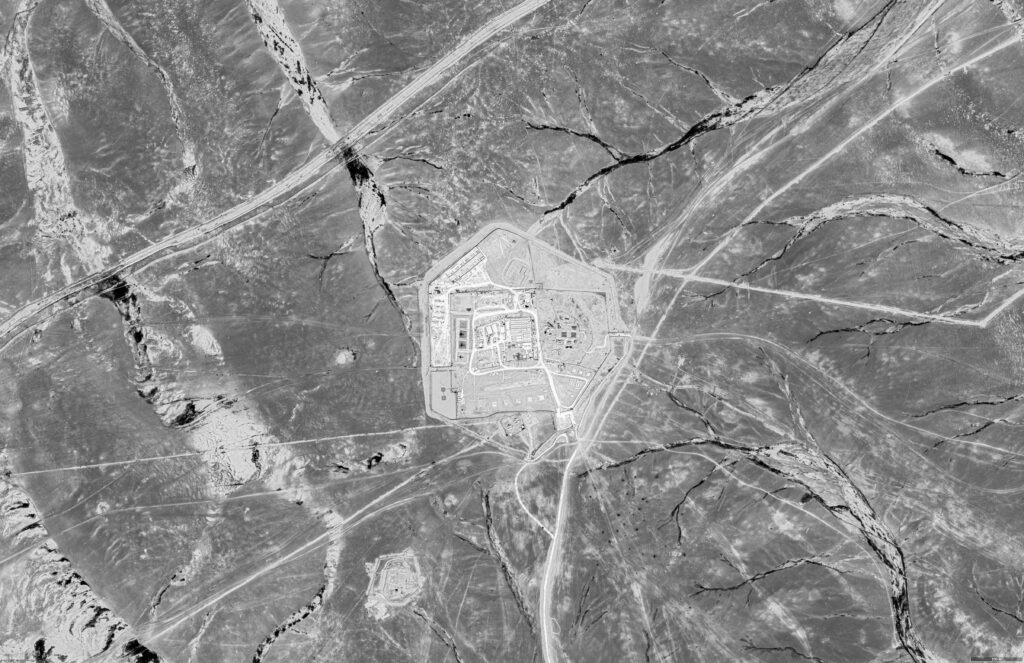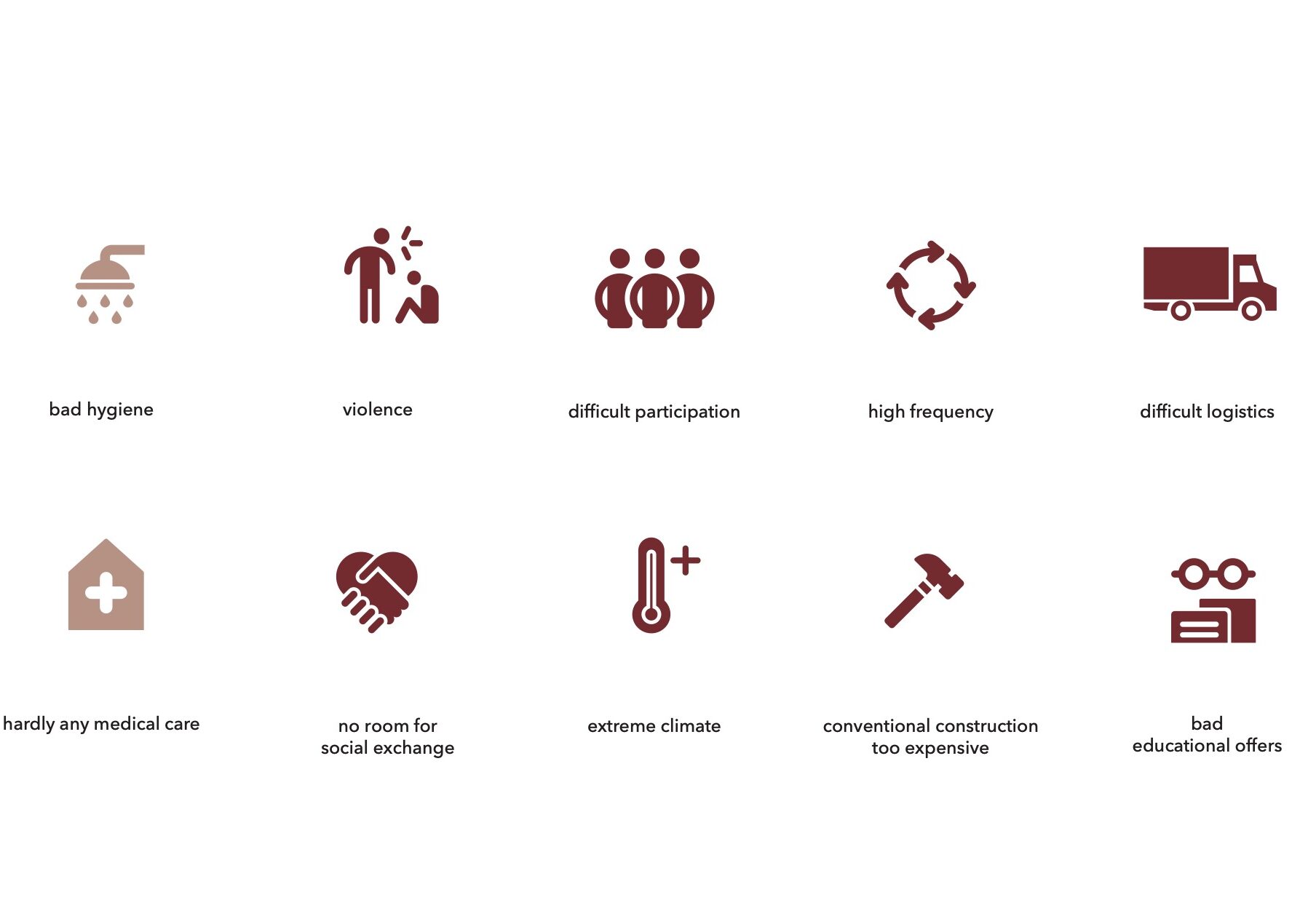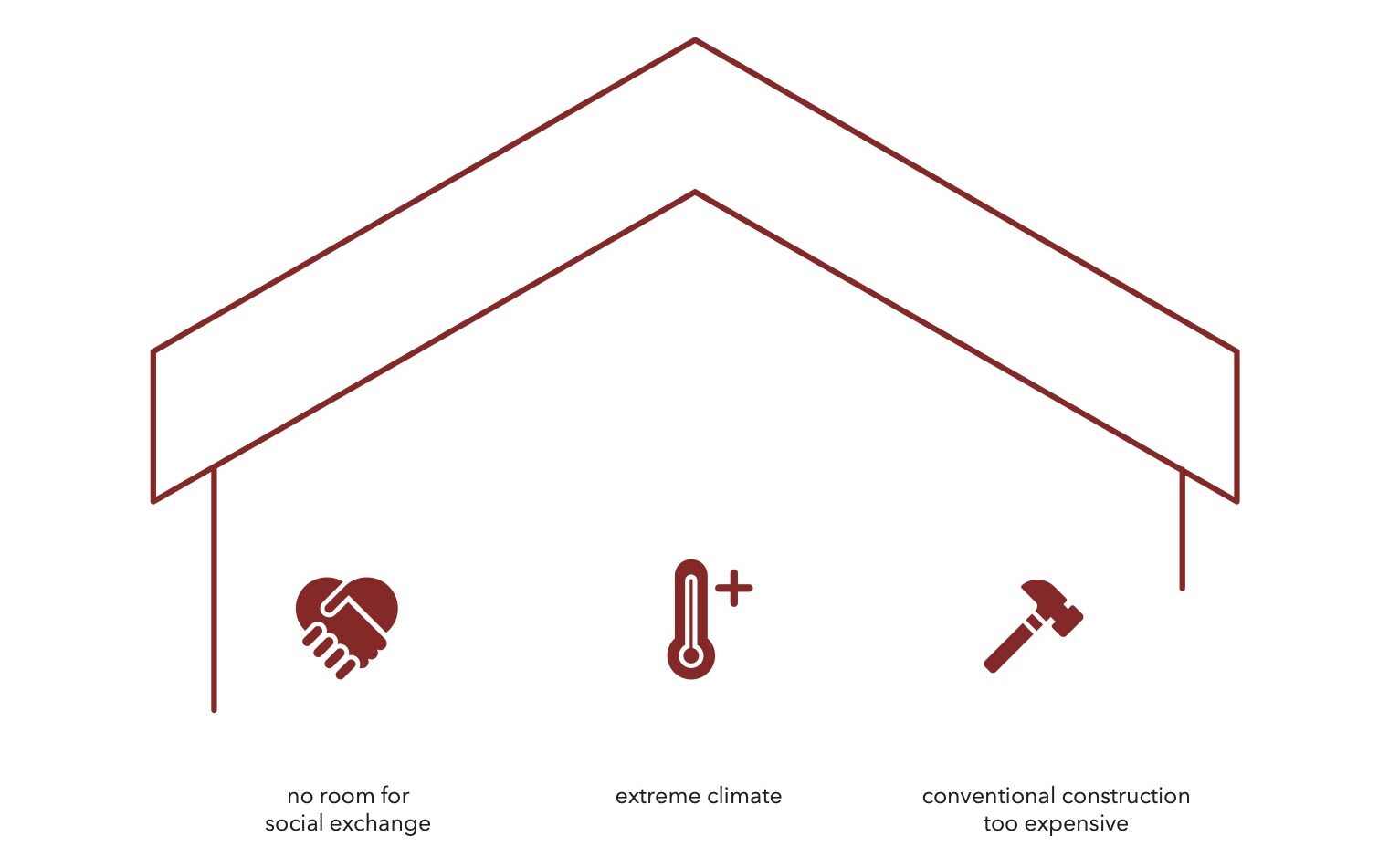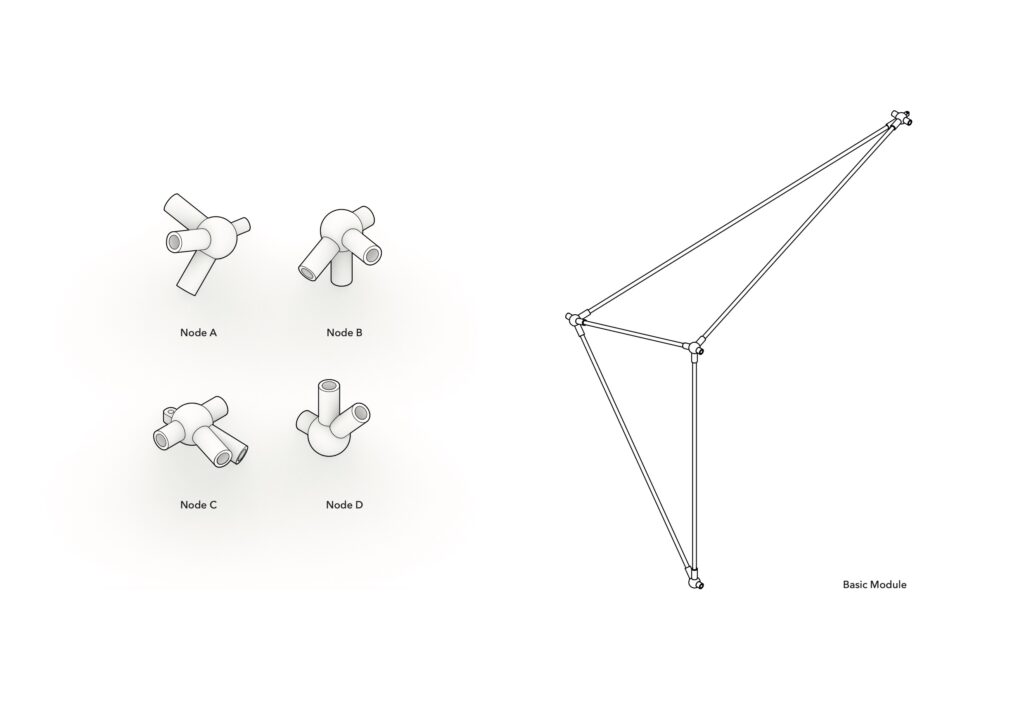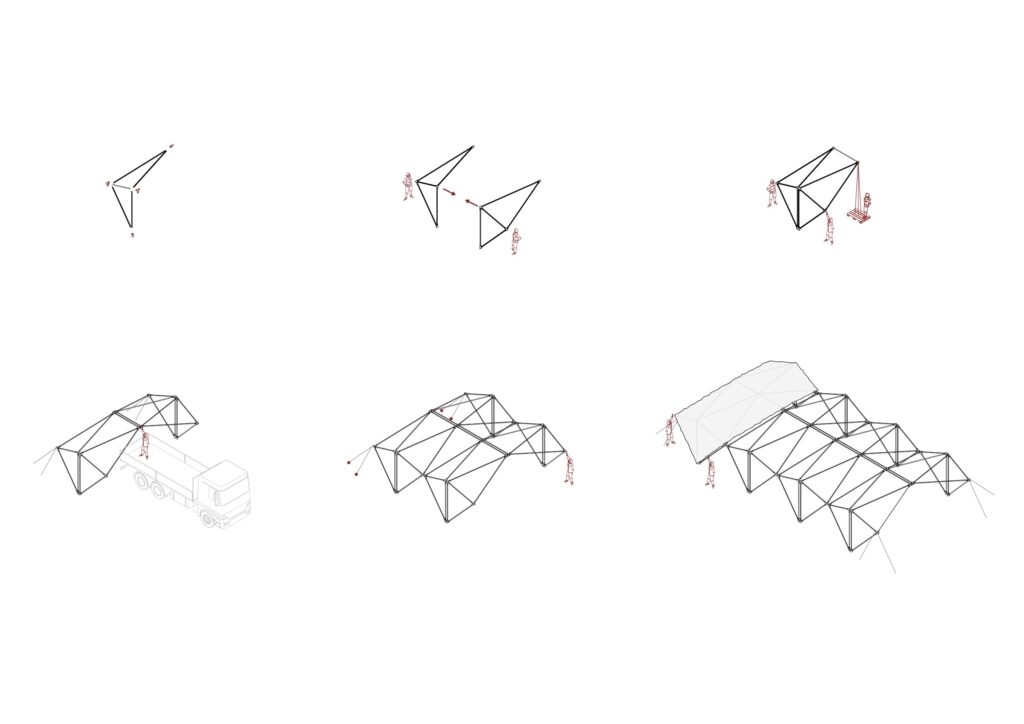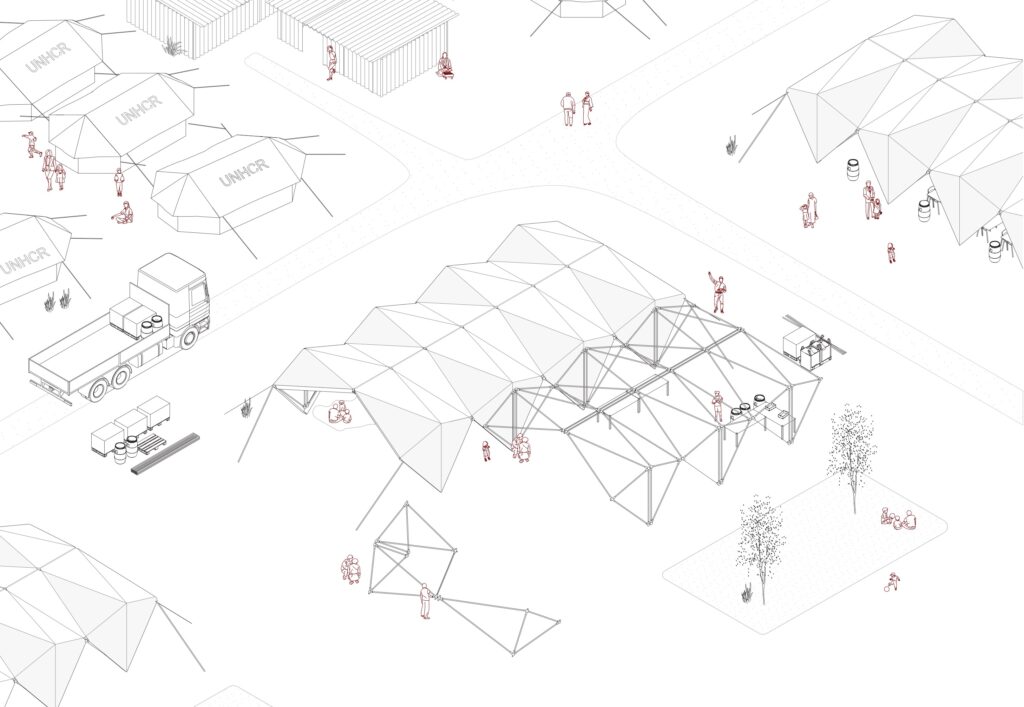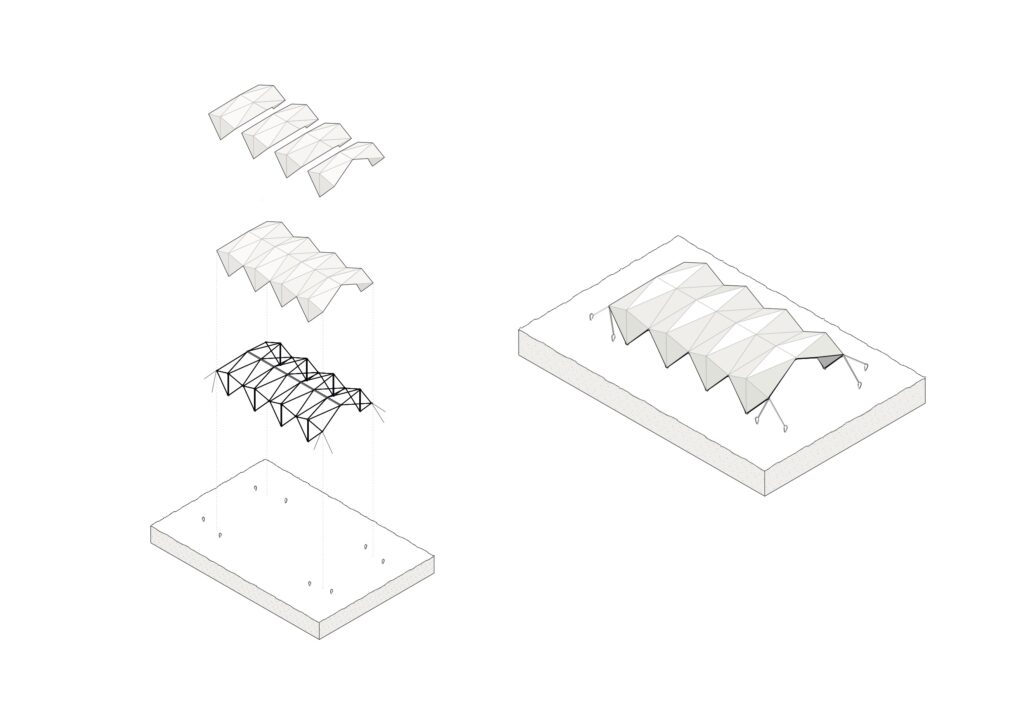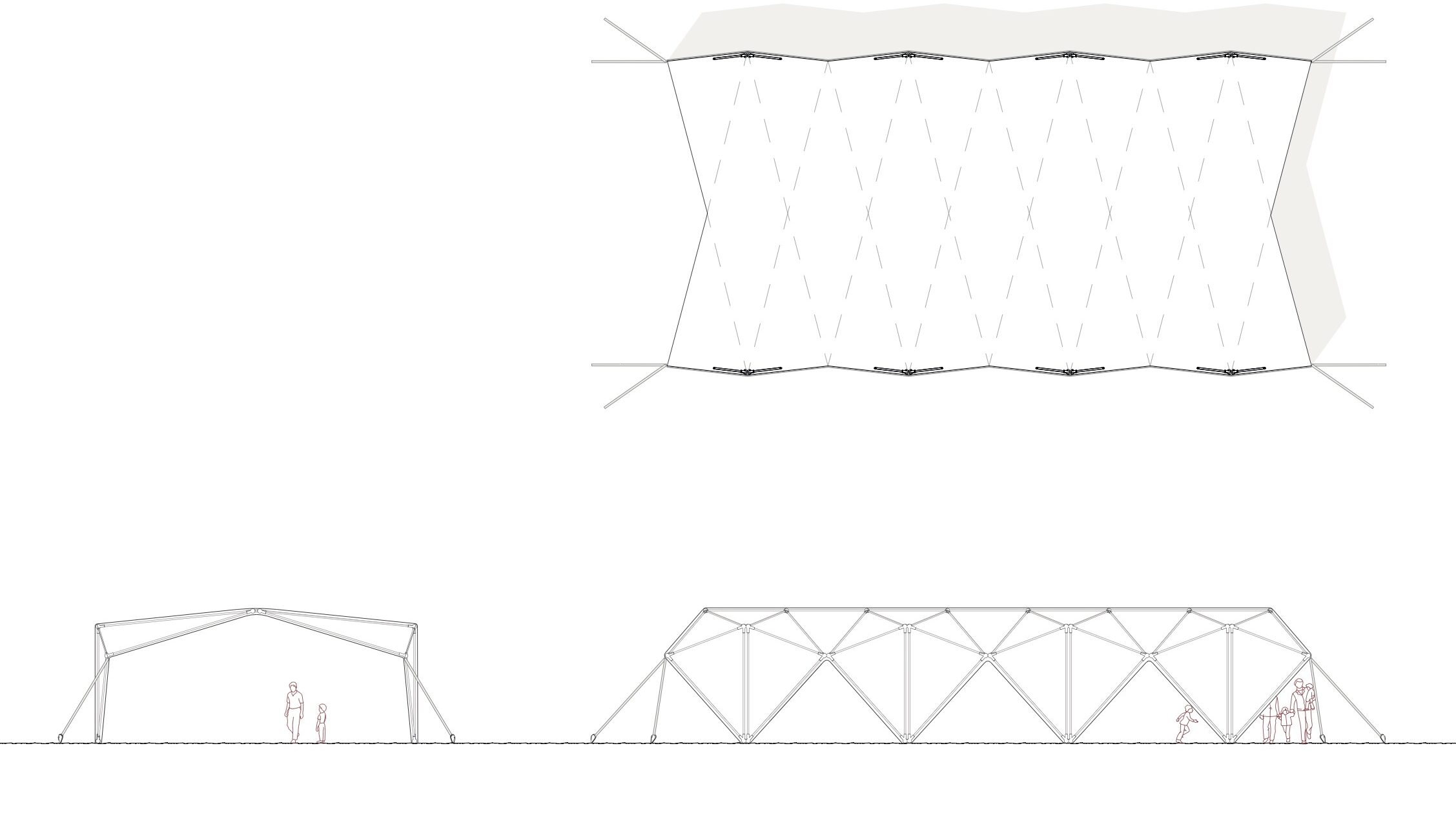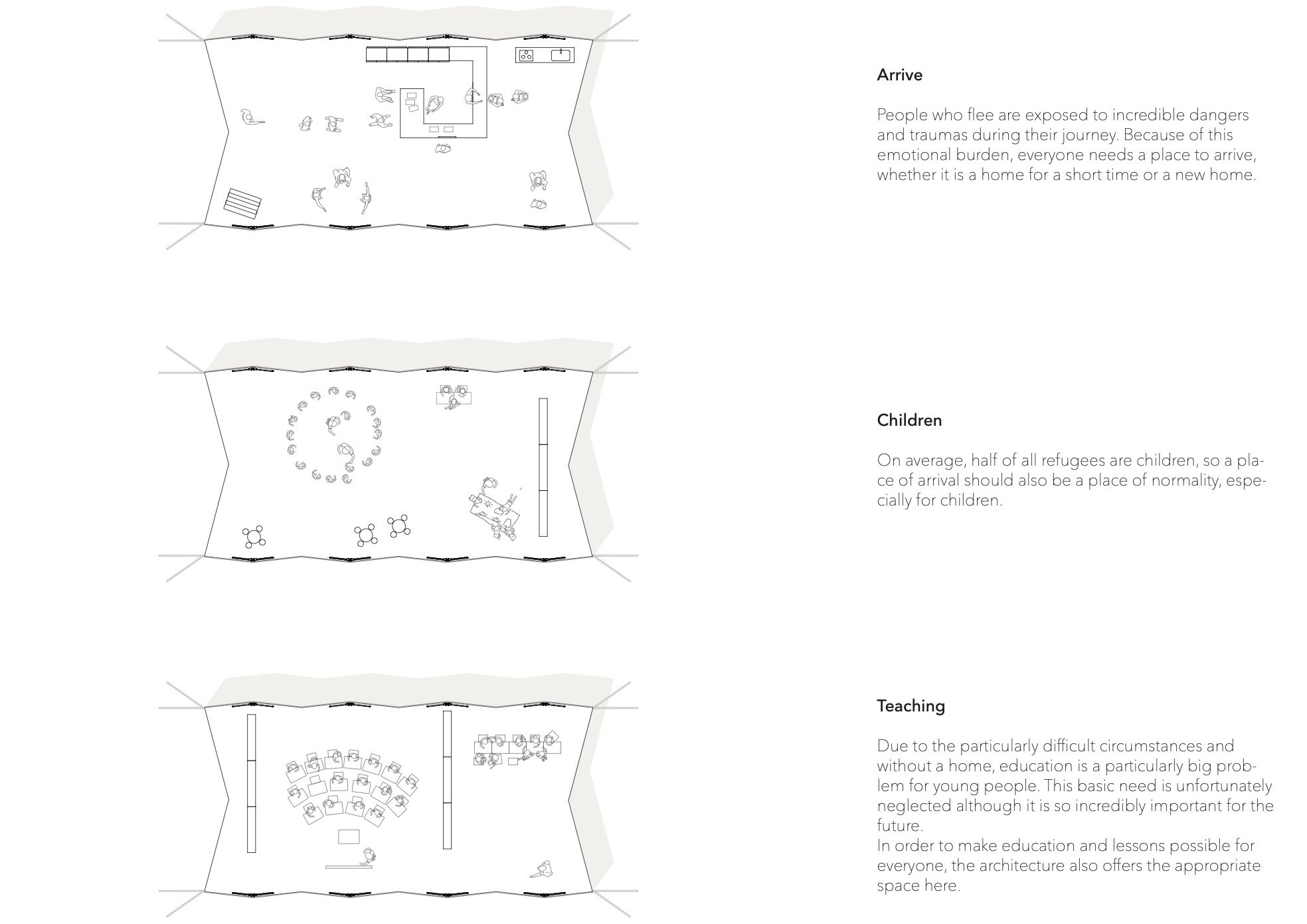#3 Modular Spike
Author & Designer: Raoul Dobrileit, Paul Mürl
Date: November 2021
The Kutupalong refugee camp in the Cox‘s Bazaar district of Bangladesh is the largest of its kind, with 730,000 refugees. Due to the rapid growth within a few weeks, the helpers have problems to make the living conditions as humane as possible. The design is intended to allow quick, uncomplicated construction from cheap, prefabricated imported as well as local materials. Diverse plug-in connections ensure modularity in both horizontal and vertical directions, while the overall concept provides the basis for individual furnishing, privacy, security and self-sufficiency. The multiple and diverse usable structure, ensures that the modules are also suitable for the construction of public facilities. All in all, the design provides an answer to a variety of problems and serves as a temporary yet durable shelter.
Green zones
Public and private green areas, for protection against erosion and for self-sufficiency, are planned.

Green zones
Public and private green areas, for protection against erosion and for self-sufficiency, are planned.

Drainage concept
The accruing water masses are led through the gardens via the monopitch
roofs and led into rainwater retention basins via drainages.

Elevation
Each individual module is founded on screw foundations and thus the interiors are protected from rising damp.
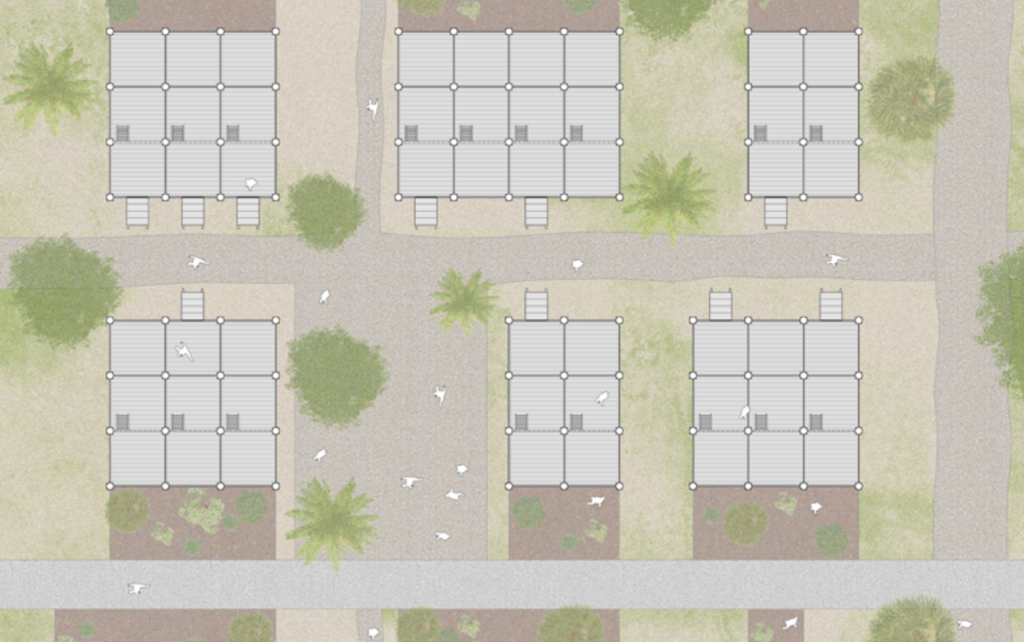

Screw foundation
Each module is supported on screw foundations to provide stability on the slope, as well as sufficient distance from the ground. This lifts the building off the ground, makes it less damp and allows the water masses in the event of a flood to drain away or seep away more easily

Wooden nodes
nodes Serve modularity, as they can not be installed incorrectly, as well as act as a connector between the foundation, structure and roof

Cardboard tubes
A very inexpensive, stable and locally producible lightweight construction. The tubes can be easily imported, respectively delivered and are easy to install
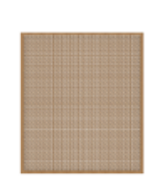
Facade panel
The panels are made of bamboo and can beroduced locally by the people who have fled. They provide them privacy, protection and modularity, while giving people the opportunity to earn money on the side.
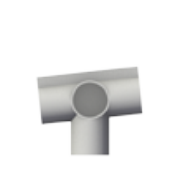
Nodes
The plastic nodes are 3D printed and are used to connect the cardboard tubes of the roof structure, as well as the installation of the rails for the foil
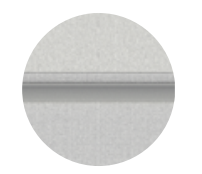
Rails
The rails placed on the node
enable the modularity of the roof. If a second module is added, the outer foils can be removed and the other roof foils can be
attached in a watertight manner
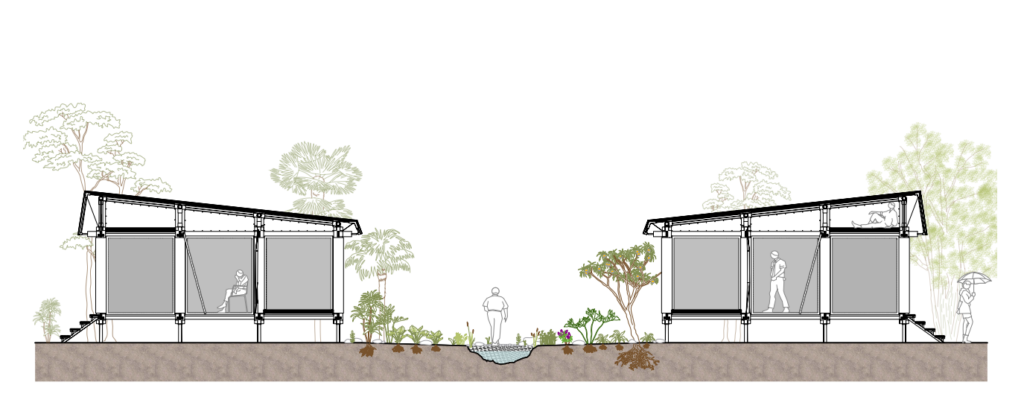
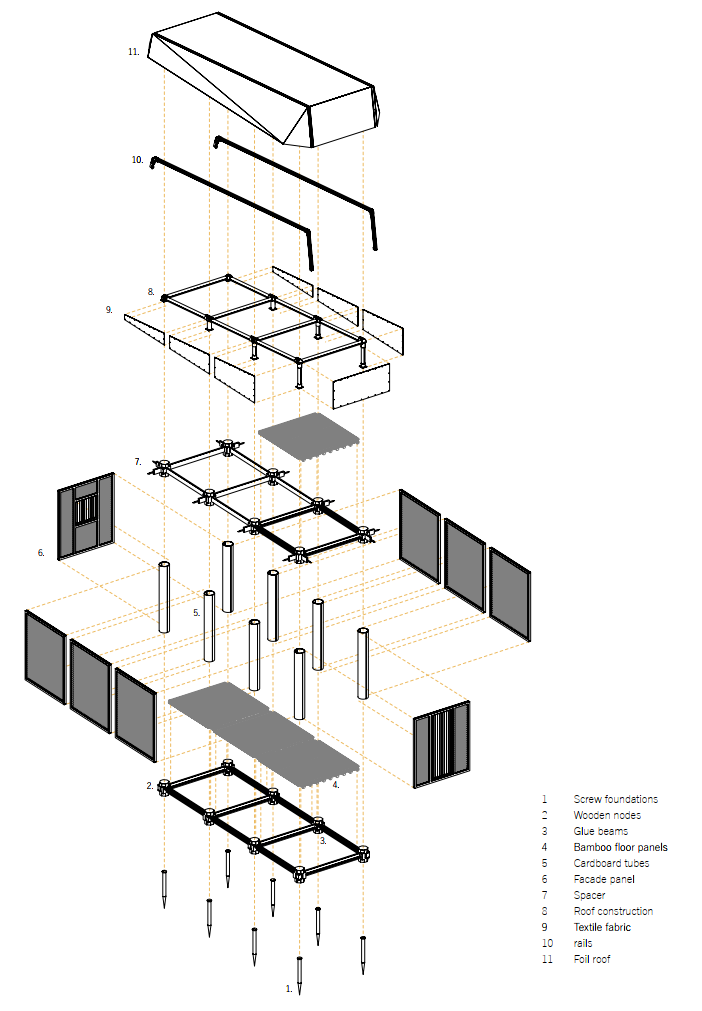
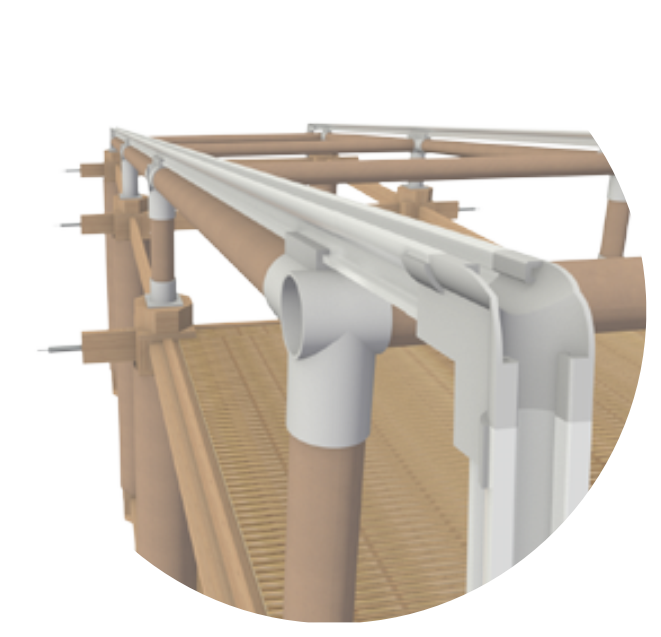
Roof construction with inserted rail for threading the foil
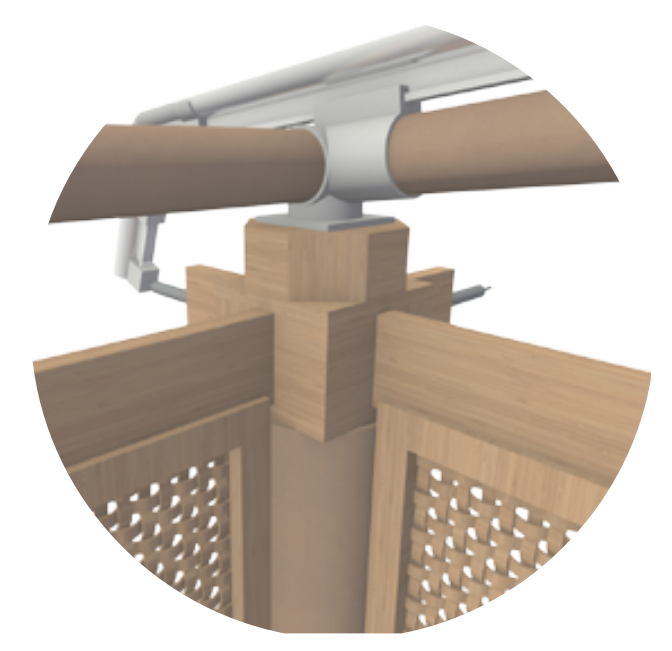
Wooden node with plugged roof construction and suspended facade panels
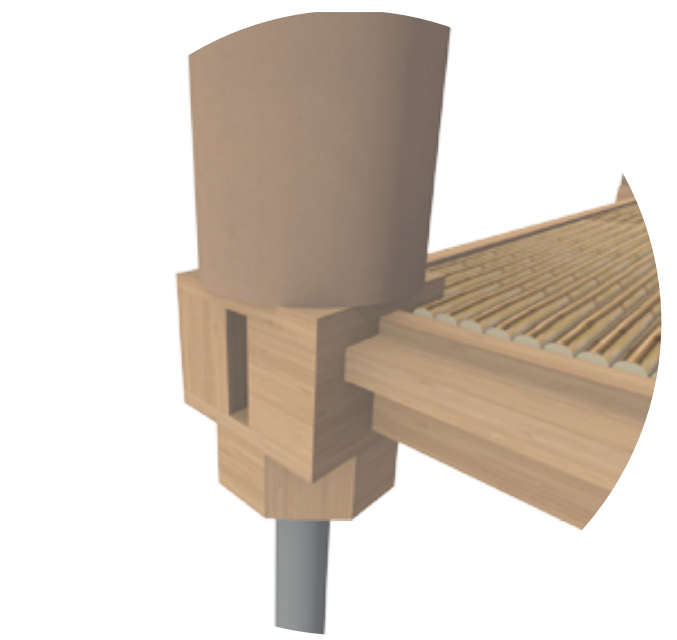
Wooden nodes with plugged glue bindings serve as a support for the base plates, plugged cardboard supporting structure and screwed foundations underneath

